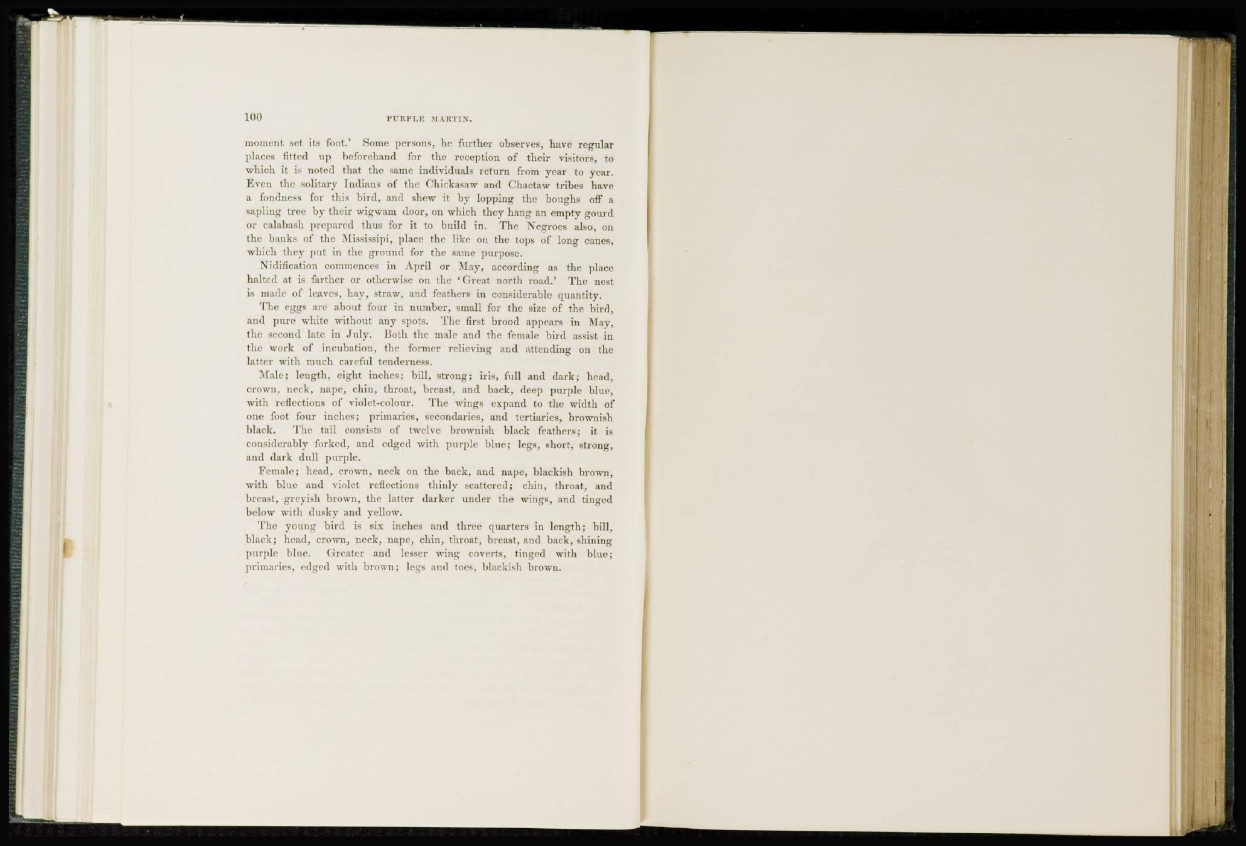
moment set its foot.' Rome persons, he further observes, have regular
places fitted up beforehand for the reception of their visitors, to
which it is noted that the same individuals return from year to year.
Even the solitary Indians of the Chickasaw and Chactaw tribes have
a fondness for this bird, and shew it by lopping the boughs off a
sapling tree by their wigwam door, on which they hang an empty gourd
or calabash prepared thus for it to build in. The Xegrocs also, on
the banks of the Mississipi, place the like on the tops of long canes,
which they put in the ground for the same purpose.
Nidification commences in April or May, according as the place
halted at is farther or otherwise on the * Great north road.' The nest
is made of leaves, hay, straw, and feathers in considerable quantity.
The eggs are about four in number, small for the size of the bird,
and pure white without any spots. The first brood appears in May,
the second late in July. Both the male and the female bird assist in
the work of incubation, the former relieving and attending on the
latter with much careful tenderness.
Male; length, eight inches; bill, strong; iris, full and dark; head,
crown, neck, nape, chin, throat, breast, and back, deep purple blue,
with reflections of violet-colour. The wings expand to the width of
one foot four inches; primaries, secondaries, and tcrtiarics, brownish
black. The tail consists of twelve brownish black feathers; it is
considerably forked, and edged with purple blue; legs, short, strong,
and dark didl purple.
Female; head, crown, neck on the back, and nape, blackish brown,
with blue and violet reflections thinly scattered; chin, throat, and
breast, greyish brown, the latter darker under the wings, and tinged
below with dusky and yellow.
The young bird is six inches and three quarters in length; bill,
black; head, crown, neck, nape, chin, throat, breast, and back, shining
purple blue. Greater and lesser wing coverts, tinged with blue;
primaries, edged with brown; legs and toes, blackish brown.